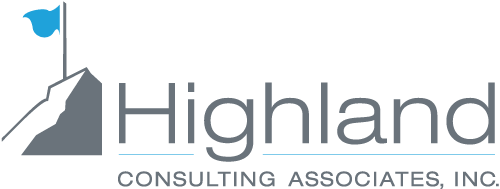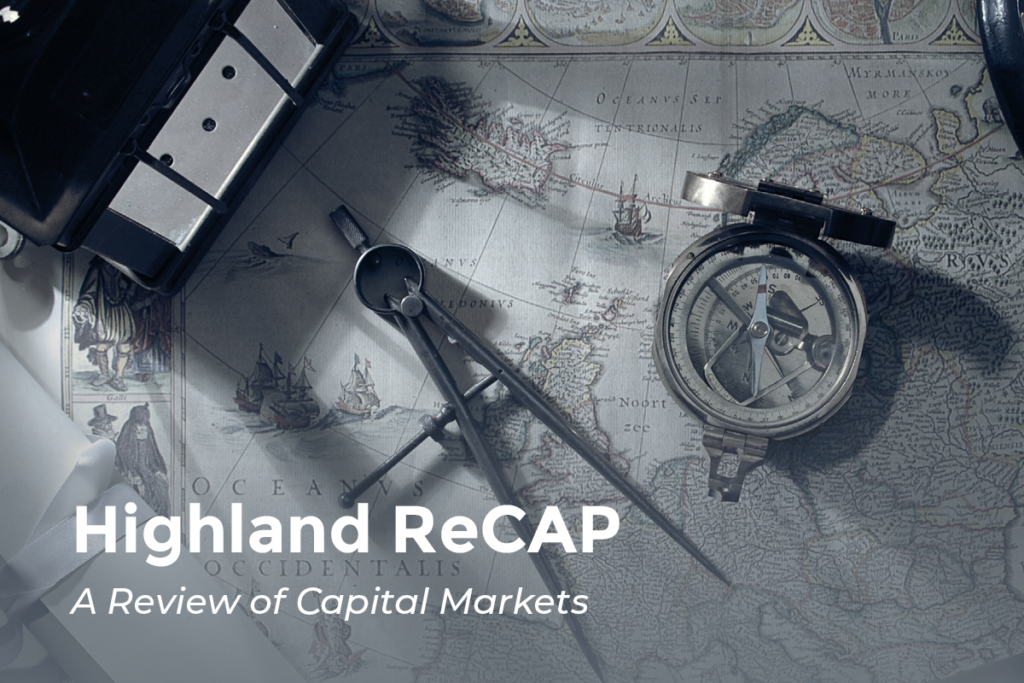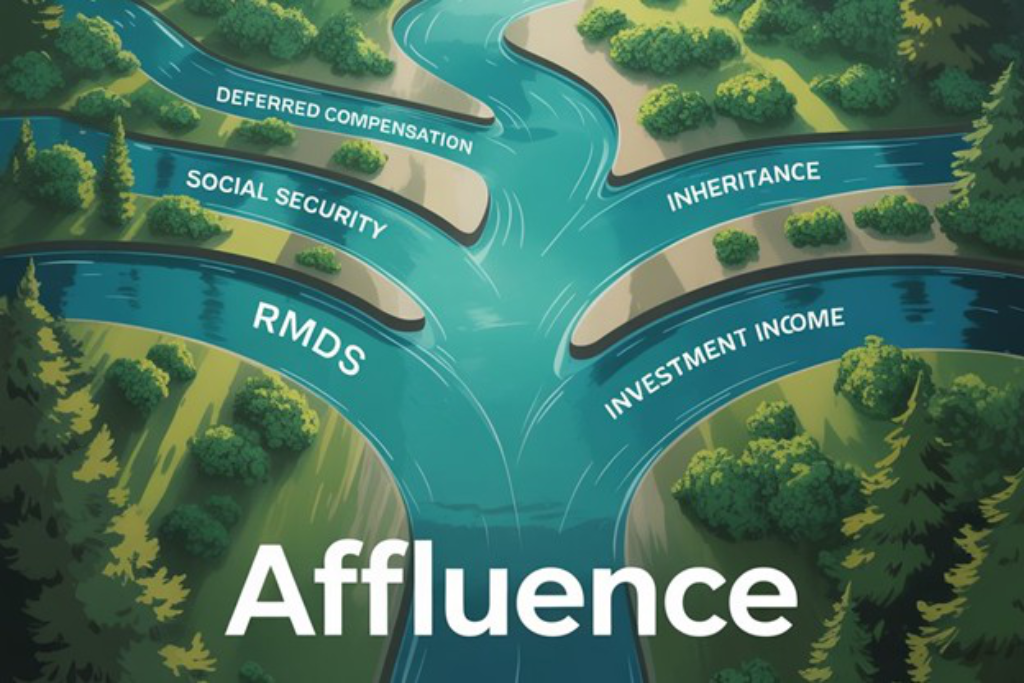A Rational Response to a Wild Ride
How a Policy Prescription Guards against Emotional Decision-making, and Leads to Positive Outcomes.

Over the past two years, financial markets and the economy have been on an unprecedented wild ride, taking investors along to experience heights of exuberance to depths of fear (and back) several times. Adrenaline rushes and roller-coaster rides are hardly what pension plan sponsors line up for. But chills and thrills was what much of 2018 through 2020 had in store for investors. We witnessed how that kind of environment can elicit strong emotion responses. And also how emotional decision-making can lead investors far afield of the outcomes they’d wanted.
At Highland, we believe the best defense against emotional decision-making amid the thrills and chills of market turbulence is to rely on the policy prescriptions that can guide plan sponsors toward informed and rational decision-making, and the safer, more positive outcomes that result.
Let’s have a look at the wild ride of our recent past and how properly-structured portfolios can keep you safely on track during periods of market turbulence.
What Just Happened? The Wild Ride of the Last Year
Here are just a few of the jolts of the last few years, and what followed as a result:
- Out of the Gates: The Fed Sets a Course
The U.S. Federal Reserve gradually began increasing interest rates in earnest in late 2018, and reduced the size of its balance sheet after incorrectly assuming that incremental economic growth would continue and possibly accelerate. Tax cuts passed in late 2017 contributed to a small bump in U.S. GDP reinforcing that false assumption. The reality, however, was that much of the tax savings at the corporate level went into share buybacks and other financial engineering activities. Eventually, market participants came to the realization that the promised growth was a mirage.
The most apparent evidence of this mirage was a reduction in equity prices of approximately 17.5% as measured by the S&P 500. Recognizing the false interpretation of economic growth and the pressure to halt the stock market drawdown, the Fed signaled it would stop its balance sheet reductions and future rate increases.
Then, in 2019, despite economic and earnings growth that failed to materialize, the S&P 500 increased by almost 30%. This improbable rally in equity prices came on the heels of the largest monetary expansion since the global financial crisis, when the Fed continued to inject liquidity to shore up a seemingly dysfunctional repo market.
As equity prices drifted higher, other signals indicated something wasn’t right. Early in 2019 , the U.S. Treasury yield curve inverted between the three-month and 10-year tenors for the first time since the global financial crisis and inflation expectations began a slow decline throughout the year. However, the rally in equity prices continued through the middle of February 2020, until…
- Enter COVID-19: The Jolt of all Jolts
As mixed signals from equity and bond markets continued without resolution, a little-known problem emerged in distant China in the form of a novel virus. Its epicenter in Wuhan, China was thought to have been contained by draconian measures to extinguish it. Failure to contain the virus led to widespread fear as the virus was transmitted from the east to west. Those fears were realized when the virus was recognized and reclassified as a worldwide pandemic.
Naturally, as fear of the pandemic escalated, risk assets reacted negatively. Equity prices dropped by over 30% in matter of weeks. Credit spreads, previously drifting downward to all-time lows, spiked causing widespread uncertainty in the bond markets, including a brief period where U.S. Treasury bonds, the safest, most liquid bonds in the world, became illiquid. For a while in March, the $18 trillioni market seized. Investors, either trying to take advantage of equities on sale, or forced by losses on other positions, rushed out of Treasuries and into cash. Add to this a worldwide, pandemic-inspired demand for U.S. currency—the safest in the world. This contributed further to a scramble for U.S. dollars by any means possible, including the sale of U.S. Treasuries. The market was ill-prepared to manage the surge in Treasury sales.
Meanwhile, to contain the spread of the virus, western governments adopted similar lockdown measures as those to the east, leading to the sharpest and deepest contraction in economic activity since the Great Depression.
- A Correcting Stimulus: The Recovery
Sharply declining and illiquid financial markets and a rapidly decelerating economy were quickly reversed thanks to massive fiscal stimulus and unprecedented monetary programs which were largely intended to boost participants’ confidence in the markets. The Coronavirus Aid, Relief, and Economic Security (CARES) Act passed by Congress was designed to help struggling businesses and their employees to stay solvent until the threat of the pandemic subsided and the economy regained traction.
By the summer of 2020, stocks had regained their all-time highs and the bond markets were functioning normally as interest rates and credit spreads were once again signaling liquidity and confidence had returned. Lockdowns had eased in various location setting up for a strong economic rebound in the third quarter.
- Has the Ride Come to a Stop? Please read on.
The point of the preceding recap is not to re-live (uncomfortable) history, but to highlight the increased frequency of significant market events. As an investor or plan sponsor, it’s natural to let emotion enter the decision-making process when you’re jolted by increasing alarms in the form of short-term events. But this reaction rarely ends well as behavioral science attests. According to Amy Morin, author of 13 Things Mentally Strong People Don’t Do, “Intense emotions can lead to rash decisions, if you’re not careful. Anger and embarrassment may make you particularly vulnerable to high-risk, low pay-off choices. Researchersii suspect intense uncomfortable emotions impair self-regulation skills.”
What’s the best defense against emotional and adrenaline-fueled decision-making? It’s a policy prescription and its companion, a periodic review to ensure compliance and verify the documentation of your chosen course of action. Acknowledge a short-term jolt for what it is, an opportunity to review current policies to confirm or refute stated goals, objectives, and tolerance for risk.
How to Enjoy a Wild Ride (and Exit Safely)
Managing well through market volatility requires plan sponsors to manage plans from a total risk perspective. While it’s easy to quantify asset-only risk using common metrics such as standard deviation and information ratio, managing plans around these numbers accrues few benefits. Asset-only risk should be examined in the context of the role each of the sub-portfolios play in the overall portfolio. For example:
The Liability Hedging Portfolio consists of long duration corporate and/or U.S. Treasury bonds. The primary goal is to mitigate wild swings in liabilities caused primarily by the change in interest rates. Generating returns above the benchmark, or alpha, is secondary to this primary goal.
The Growth Portfolio can contain many different asset classes depending on the plan sponsor’s appetite risk and illiquidity. Public equities, both domestic and international, are the most common, but some plan sponsors employ more esoteric asset classes such as hedge funds, private equity, or commodities. Recognize the potential for a competing objective here—competing in the sense that the allocation to a growth portfolio increases asset volatility, given the higher risk/return profile, and also reduces the liability-hedging portfolio allocation to close the gap between assets and liabilities.
Your Plan Prescription: A Holistic Way to Manage Risk
Successful pension plan management should include a focus on three risks:
- Interest Rate Risk. Pension plans are most susceptible to changes in interest rates as liabilities will increase/decrease as the discount rate decreases/increases. There are a number of ways to structure the liability-hedging portfolio to decrease funded status volatility as a result of changes interest rates.
If the primary risk stems from changes in interest rates, then insulation comes from creating a bond portfolio that mimics the movement of the liabilities. This can be accomplished by matching the duration of the available bonds to that of the liabilities. In the case of poorly funded plans, a better hedge can be achieved by extending the duration beyond the liability duration; however, this creates something called “key rate risk” at the long end of the yield curve. For example, let’s assume a bond portfolio has a duration of 12 years, and the liabilities have a duration of 10 years. If everything else held constant, for every 1% move down in interest rates, the asset portfolio will increase by 12% while the liabilities will only increase by 10%. A favorable outcome, no doubt. The reverse is also true, if interest rates rise by 1%, then the same bond portfolio will decline by 12% while the liabilities only decrease by 10%. Therefore, when constructing the liability hedging portfolio, it is important to consider the risks associated with managing a long-duration bond portfolio. - Credit Risk. Very often the liability-hedging portfolio will be exclusively invested in long corporate bonds. The reason is simple: the statutory discount rate is derived from the AA corporate bond yield curve. As previously discussed, interest rates are the primary risk for pension plans. But plan sponsors must also consider credit risk. To ignore this risk would introduce an unwanted mismatch where the credit quality of the bond portfolio is vastly different than the quality of the discount rate.
Ideally, the credit quality of both should be similar, but it is not possible to invest in AA quality bonds in any quantity that is meaningful and will provide proper diversification. As a result, most corporate bond investment managers are assigned a benchmark where close to a majority of the available bonds are rated BBB. The best way to raise the credit quality of the bond portfolio to match the discount rate is to invest a portion of the available assets in long duration U.S. Treasury bonds. There are additional benefits to using these bonds. First, the liability-hedging portfolio will exhibit better downside protection than a plan that is 100% tied to the business cycle using only corporate bonds. And second, a portfolio comprised of only long-duration U.S. Treasury bonds can be implemented passively, thereby lower the total asset management fees of the plan. - Yield Curve Risk. Lastly, plan sponsors seeking to dial in the precision of their liability-hedging portfolio will also want to consider investing the portfolio in proportion to liabilities at various duration buckets along the entire yield curve. While this is the least important risk associated with managing a pension plan, it is also the most difficult and complex to implement. For this reason, many plan sponsors forgo the option and instead rely on managing interest rate and credit risk only. For plan sponsors where precision is the goal, the use of a completion manager is required. The role of this specialty assignment is to employ various instruments (often a combination of U.S. bonds, Treasury STRIPS, and U.S. Treasury futures) to carefully align with the hedging portfolio at various points along the yield curve. In most cases, U.S. Treasury futures will be required because of the implied leverage that is required for the ideal hedge. Because of this, it should be noted that this type of strategy is better suited to better funded plans where less implied leverage is required to implement the hedge.
Discussion of these three risk types is a start, but it’s wholly inadequate without the documentation that memorializes the resulting decisions. No one develops a home evacuation plan during a fire. Likewise, policy decision-making during a crisis is seldom profitable. Pension plan guidelines, or policy prescriptions, must be documented, reviewed regularly, and amended to be the safeguard that plan sponsors rely on when the markets take unforeseen turns.
Arriving at a Safe Stop
In December 2019, no one was preparing for a pandemic, or its economic fallout. Is there another hill awaiting us in 2021? Another plunge into darkness? Who can say? But a plan prescription can keep you safely on the rails. Ed Catmull, co-founder of Pixar and someone familiar with wild rides, said this about persevering through uncertainty: “Because your rational mind knows that tunnels have two ends, your emotional mind can be kept in check when pitch blackness descends in the confusing middle.”
Let’s hope we’re fast approaching the other side of the COVID tunnel and this wild ride’s end. Until then, keep your seatbelt fastened, and know that we at Highland are at your side, advocating for you and your plan’s success.
[ii] https://pubmed.ncbi.nlm.nih.gov/8979390/
Highland Consulting Associates, Inc. was founded in 1993 by a small group of associates convinced that companies and individuals could be better served with integrity, impartiality, and stewardship. Today, Highland is 100% owned by a team of owner-associates galvanized around this promise: As your Investor Advocates®, we are Client First. Every Opportunity. Every Interaction.
Highland Consulting Associates, Inc. is a registered investment adviser. Information presented is for educational purposes only and does not intend to make an offer of solicitation for the sale or purchase of specific securities, investments, or investment strategies. Investments involve risk and unless otherwise stated, are not guaranteed. Be sure to first consult with a qualified financial adviser and/or tax professional before implementing any strategy discussed herein. Past performance is not indicative of future performance.



